Don’t you hate the scratches and chips that fade your car’s paint? If yes, then you need PPF. Read our guide that breaks down everything one must know about PPF. Let’s learn what PPF is, how it keeps the cars looking like new for years, and whether it is worth the investment.
What Is PPF (Paint Protection Film) for Cars?
PPF, or Paint Protection Film, is a thin, but strongly resistant and durable, layer that’s applied to a vehicle’s exterior. This layer, which is made of high-quality urethane, helps keep a vehicle’s paint at its best, keeping the car looking like new for years.
The tough and highly resistant urethane material of this film is made in a way to absorb shocks and external impact. PPF film can easily absorb and resist scratches, stains, and chips. This thin film acts as a shield, protecting the vehicle’s paint from the impact of intense weather, UV rays, and more.
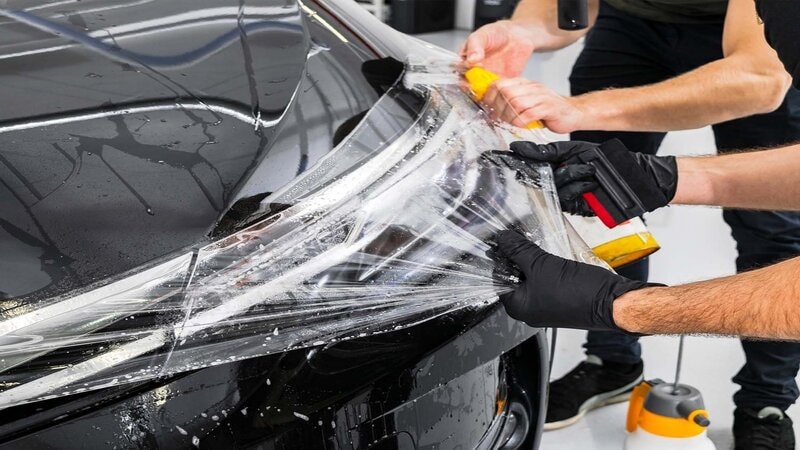
One can easily get their entire vehicle covered with PPF if they want. However, it is mostly applied only to the high-impact areas of a vehicle’s exterior. These include the bumpers, hood, roof, fenders, side mirrors, and any other surface that is more prone to being hit by debris and stones on the road.
How Paint Protection Film Works?
You can understand paint protection film as an invisible layer that covers your car and protects its original paint and body. But how does it do that? Simply defined, PPF works by absorbing and enduring the impact of external factors that would otherwise ruin the vehicle.
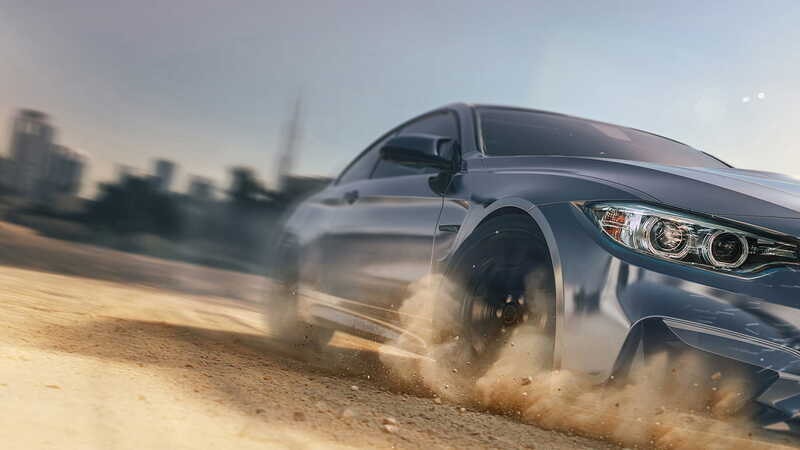
The primary purpose of PPF is to act as an absorbent layer that can bear the entire impact of whatever hits it. It can absorb the shocks, scratches, rock chips, and other environmental impacts that are directed towards the vehicle.
Whether it is the stones, the debris, tree sap, scratches as a result of small collisions, or bug splatters, PPF bears it all. This layer has self-healing properties that allow it to self-repair its scratches with time. All of these PPF properties reduce the need for consistent paint jobs and keep the vehicle new.
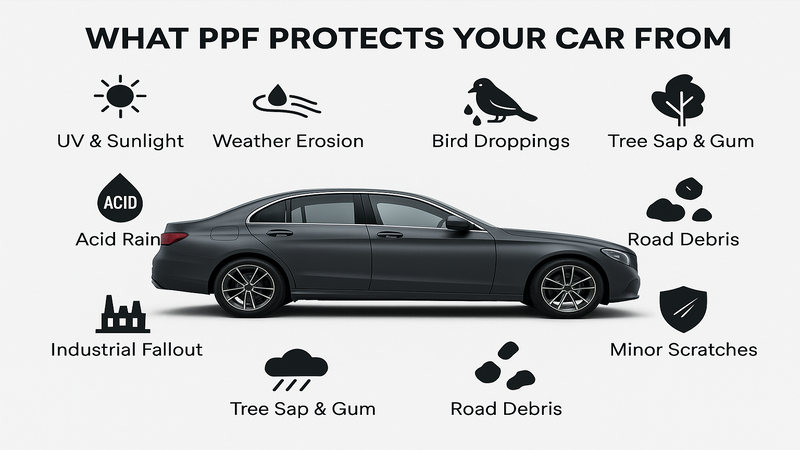
Benefits of Using Paint Protection Film
You’d surely have understood by now, but let us put it more clearly. Getting PPF for your car is a great investment that comes with multiplied returns. The wide range of protective benefits that PPF comes with is irreplaceable and certainly worth every penny spent on it.
To begin with, PPF can protect your vehicle’s paint against rock chips, scratches, dangerous debris impact, and more. Paint protection film has self-healing properties, which means it can repair minor scratches on its own, reducing the need for you to invest in costly vehicle paint jobs every year.
The harmful impact of UV rays is another major concern for most vehicle owners, especially those who live in regions with high UV indices. UV and intense heat can ruin the vehicle’s shine and colour, mainly by catalyzing oxidation.
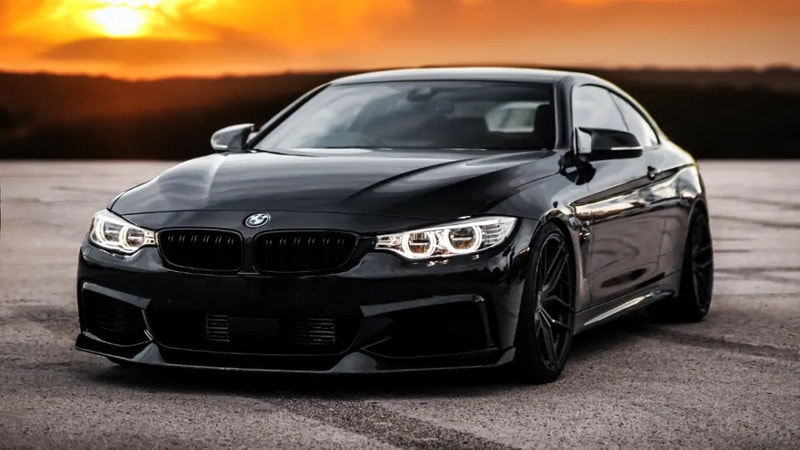
Thanks to the UV and oxidation resistance of PPF, all of this can be avoided.
PPF coating is hydrophobic, which means it won’t retain water upon being washed. This makes cars coated with this film very easy to clean and maintain. When a car’s paint is protected and it is cleaned regularly, it looks new even after years of use. This adds to the resale value of that car.
This thermoplastic urethane film is highly compatible, and you can easily couple it with other vehicle paint protection options. You can combine PPF with ceramic coating for added protection and an extra glossy look for your car.

With professional installation, PPF can prove to be a cost-effective choice for your vehicle. Compared to all other paint protection methods one can opt for, paint protection film is the most valuable and beneficial.
We strongly suggest opting for professional PPF solutions if you want to avoid consistent paint repairs. PPF is certainly cheaper than costly paint jobs that not everyone can afford each year.

Is PPF Worth It for Your Car?
We don’t see any point in anyone asking this question till now. But we’ll still break down a little on why you should consider PPF for your vehicles.
PPF is perfect for anyone who owns an expensive or new vehicle and wants it to retain its looks. You are committing a mistake if you aren’t investing in paint protection film for your luxury vehicles. Those owning a sports car can protect their peace of mind with PPF, especially if they have lease returns due.
One’s driving style and commute routine have a significant role in deciding the urgency of their need for PPF. If your car commutes regularly on highways at high speeds, you need to protect it against debris and stones; hence, PPF is needed.
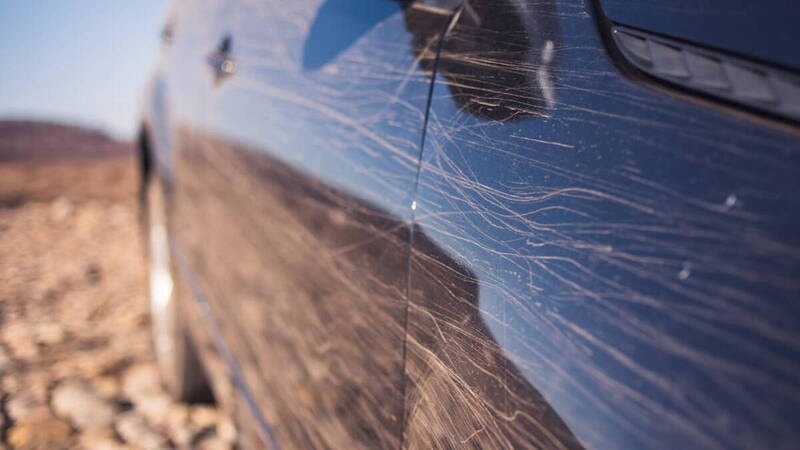
If you drive more in areas where the roads have different types of gravel and bugs, you need PPF. In short, PPF is a necessity for all those who want to protect their cars and improve their resale value. PPF is the way to protect your vehicles in the long term without compromising their aesthetics and neatness.
Don’t worry about the costs of PPF. This investment certainly has great ROI. Once you’ve paid for high-quality PPF, you need not worry about spending on the repainting at least for the next 3 years. PPF-coated cars also bring good money to the owners upon sale, again bringing great ROIs.
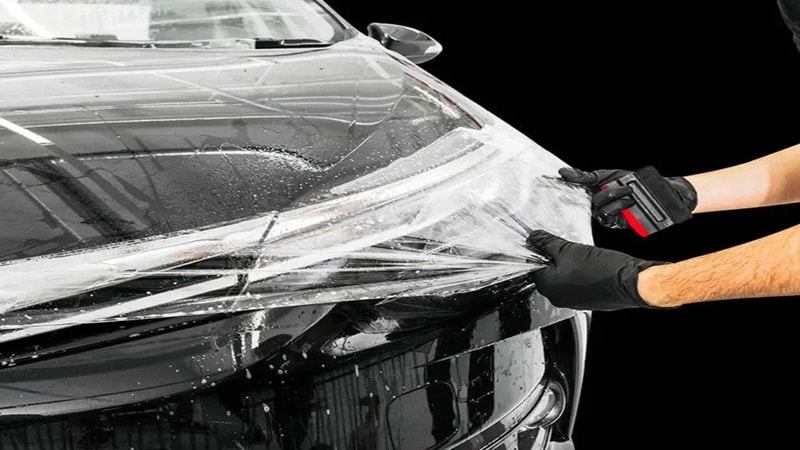
Are There Any Disadvantages of PPF Installation for Your Car?
While PPF has multiple benefits, there are a few downsides to getting PPF for your vehicles, most of which are avoidable.
If you don’t drive your vehicle too much in areas where it can get scratched, PPF can be an avoidable expense for you. As you might know, the larger and heavier vehicles come with hefty costs, and the same is the case with PPF. PPF is pricey for big vehicles, especially if you’ve gotten full-body coverage.
Unless you hire a professional to install PPF, the installation process can end up poorly. There can be wrinkles, bubbles, lines, and peeling edges that can ruin the entire look of your vehicle.
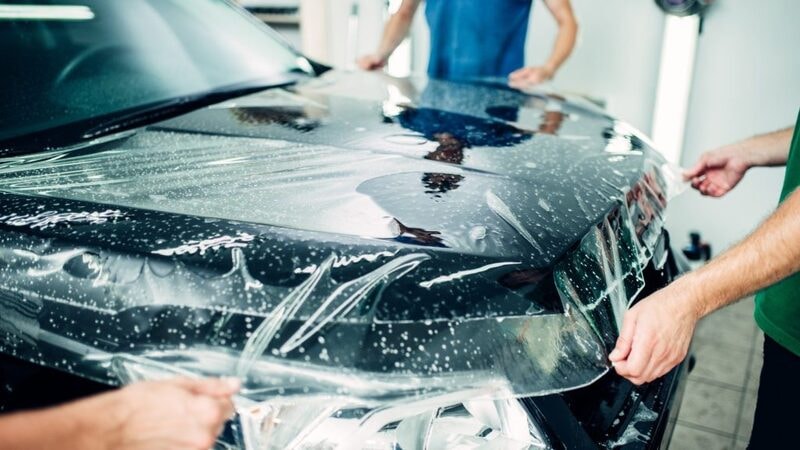
If your PPF is cheap and low-quality, it will become yellow over time and can lose its clarity. Replacing damaged PPF film can be an annoying and costly affair. Make sure you only invest in the top PPF manufacturing brands and hire a professional installer to avoid the above problems.
How Long Does PPF Last on a Car?
In most cases, a nicely done PPF can typically last anywhere from 5 to 10 years.
However, there are various factors that can influence the lifespan of a paint protection film. The quality of your PPF and the professionalism in its installation process can enhance its lifespan. How you look after a PPF-coated car and the climate around it can also impact its lifespan.
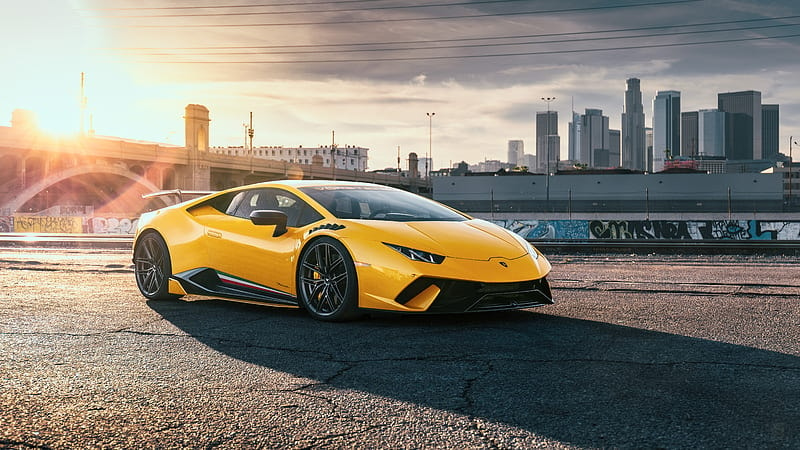
Types of Protection Solutions
There are various types of PPF available to protect your car’s paint. These include matte PPF, clear bra, ceramic coating, and a few others.
Depending on the level of protection you want and the look you’d prefer for your car, you can choose a certain PPF coating type.
You might want to go for full-body coverage or opt for applying PPF coating only on high-impact areas of the car, including its roof, hood, mirrors, and bumper.

Is PPF Good for New Cars?
PPF coating is surely a great option for new vehicles if you want to protect their paint and finish from day 1. A new vehicle coated with PPF can be kept entirely safe from chips, swirl marks, and splatter. This makes it easier to take care of the vehicle’s paint in the long run and adds to its resale value.
The Process Of PPF Installation
PPF installation can be easily accomplished when carried out by a professional. It starts with a thorough washing of the vehicle surface, followed by polishing the car if needed.
Then the film is nicely cut to fit the vehicle’s panels and is applied to the vehicle using a slip solution. Then the bubbles and edges are smoothed out for a seamless look. The curing process takes around 48 hours, and the film is all set.
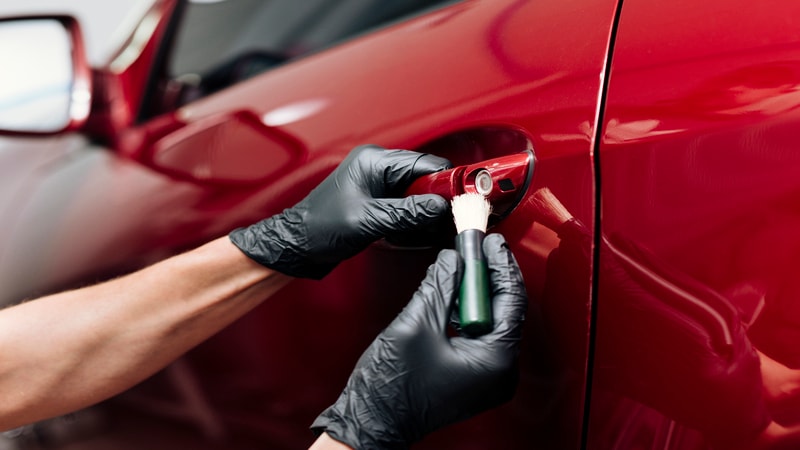
Sometimes, extra heat is applied so the film can stick better. At the end of this process, your car is covered with a transparent protective layer that will protect it for years.
Maintaining a PPF Coated Vehicle
It’s not very hard to take care of a PPF-coated car. Just make sure you wash it regularly with mild soap and water. Avoid using chemicals or abrasive materials during the wash. Regular wiping with a soft cloth can help avoid dirt and contaminants.
While many don’t realise it, proper care of PPF coating can help extend its lifespan and enhance its functionality.
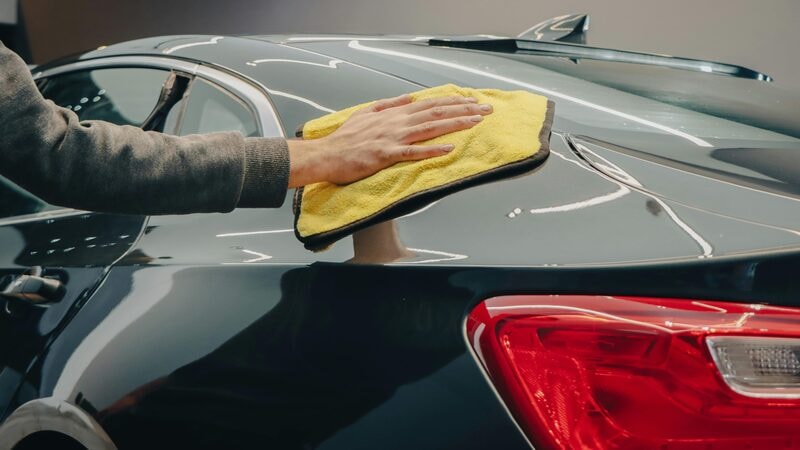
Cost and Value of Paint Protection
The costs of PPF coating can vary depending on the type of film, coverage provided, installation method, and quality of the film. PPF can be an expensive investment, especially when you get it for commercial fleets, but the long-term protection it provides is worth it.
The real value of PPF coating lies in its ability to save you from recurring car paint jobs, maintenance expenses, and minor damage. It’s a great investment for car owners who want to protect their vehicle’s appearance.

PPF Vs. Ceramic Coating: Which Should You Choose?
The debate on what’s better between the PPF vs. ceramic coating is never-ending. It depends on what you prefer for your car.
We suggest choosing paint protection film if you want protection against scratches, chips, and debris.
Alternatively, go for ceramic coating if you prioritise aesthetic appeal, glossy finish, and UV protection. You can also combine both these coatings to avail all the benefits and complete coverage.
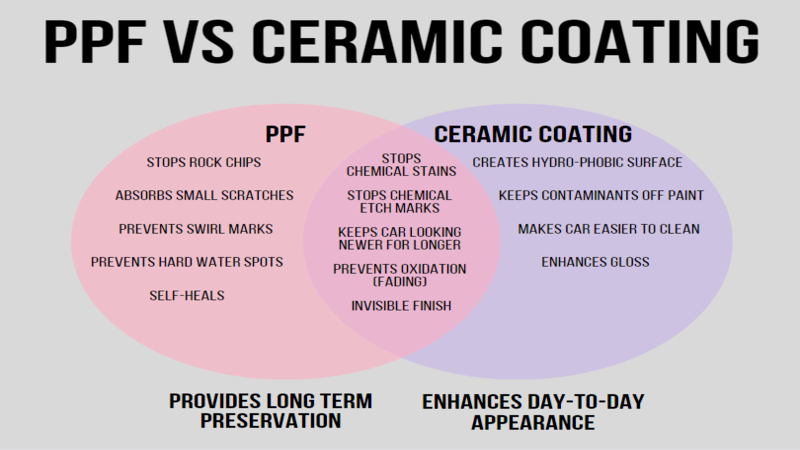
Common PPF Mistakes to Avoid
Some common mistakes that people make during PPF installation include the use of harsh chemicals, abrasives and improper installation. Make sure you remove all the bubbles and wrinkles, and properly align the film.
Proper care and cleaning after the installation are also important to extend the film’s life.
Tips To Make PPF Last Longer
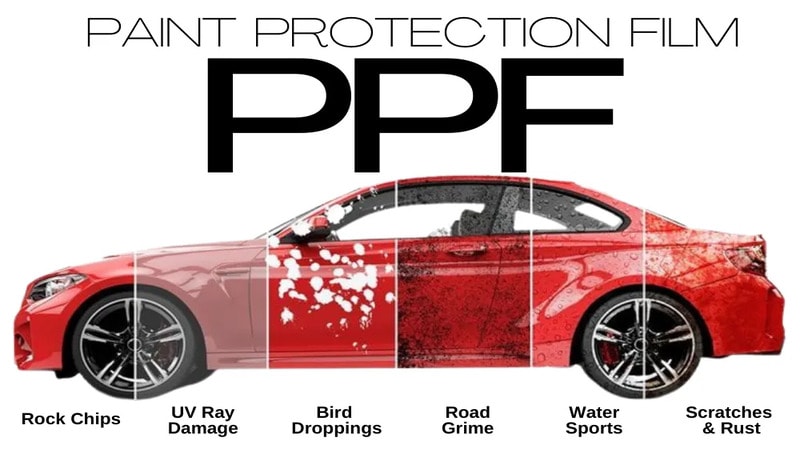
To make your PPF last longer and to avail maximum benefits, ensure its proper cleaning with soft car wash materials. Avail the benefits of parking shades and park your car where direct sunlight or rain can’t reach it.
Always make sure you aren’t pressure washing the edges of the film to avoid peeling.
It’s important to get professional inspections every year. This can help ensure there’s no peeling or damage to the film that can ruin the entire film later.
FAQS
Q1: Is PPF worth it on a car?
Yes, PPF is certainly worth it. It can protect the car’s paint from scratches and debris, extending its lifespan and making the car look new.
Q2: How much does PPF usually cost?
PPF costs can vary. For partial coverage, you may expect to pay around $1,500-$2,000. In case you want those full-body protection films, you might have to pay around $8,000 or even more.
Q3: How long will PPF last on a car?
With proper care, PPF can last around 7-10 years. If you couple it with ceramic coating, it can last even longer.
Conclusion
PPF is a wonderful investment for your vehicle. It can protect your car and make it look stylish – all while costing significantly less than regular maintenance sprees. Make sure you hire the right professionals to coat your vehicle with the PPF option of your choice and protect it for years to come.
Get Long-Term Protection with High-Quality PPF from Carlike
At Carlike Film, we’ve a team of expert paint protection film installers who can give your vehicle the protection it deserves. We offer competitive pricing, seamless installation, and cutting-edge solutions for your vehicle needs. We can’t wait to provide you with the best PPF solutions, tailored support, and advice every step of the way.
Contact us today if you want commercial-grade PPF or simple PPF solutions for individual needs.



